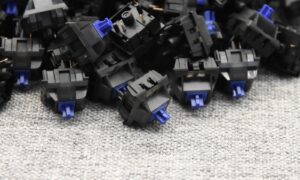Are You About to Make a Costly Flooring Mistake? Picture this: You’ve spent weeks picking out the perfect wood flooring. The color? Stunning. The texture? Just right. But after installation, it starts warping, squeaking, or worse—lifting at the edges. What went wrong?
A bad installation can turn your dream floor into a nightmare. The type of wood, the subfloor, and even the humidity in your home all play a role in getting it right. But don’t worry. This guide will walk you through everything you need to know about installing wood floors like a pro—without the costly mistakes.
Pre-Installation Considerations
Choosing the Right Wood Flooring
Not all wood flooring is created equal. The first step is picking the right type for your space.
- Solid Wood Flooring: Great for longevity, but prone to warping in humid areas.
- Engineered Wood: More stable and better for high-moisture areas.
- Laminate or Luxury Vinyl: Not real wood, but budget-friendly and durable.
Before you buy, consider foot traffic, pets, and moisture levels in the room.
Preparing the Subfloor
Your wood floor is only as good as what’s underneath it.
- Concrete Subfloors: Must be dry and level. A moisture barrier is a must.
- Plywood Subfloors: Ensure they’re clean, secure, and free from squeaks.
- Old Flooring: Removing existing tiles or carpet? Check for nails and adhesive residue.
Skipping this step can lead to uneven flooring and future damage.
Acclimating the Wood
Wood expands and contracts with temperature and humidity. That’s why it needs time to adjust to your home.
- Leave your flooring planks in the room for at least 72 hours before installation.
- Maintain room temperature at 18–24°C and humidity between 30–50%.
- Stack planks flat with space between boxes for air circulation.
Neglect this, and you’ll be dealing with gaps or buckling after installation.
Installation Methods
Nail-Down Installation
Perfect for solid wood and plywood subfloors, but it requires the right tools.
- Pros: Secure, long-lasting, can be refinished multiple times.
- Cons: Requires a nail gun, professional expertise, and isn’t suitable for concrete.
Pro Tip: Place nails at a 45-degree angle into the tongue for best results.
Glue-Down Installation
A strong adhesive bonds engineered wood or parquet flooring to concrete or plywood.
- Pros: Good for soundproofing, works well on concrete.
- Cons: Messy, requires precise placement, difficult to remove.
Mark Reynolds, founder of PointofFlooring, says: “Using the wrong glue can lead to planks shifting over time. Always use a high-quality adhesive designed for wood floors.”
Floating Floor Installation
The easiest DIY method, using click-lock planks that sit above the subfloor without nails or glue.
- Pros: Quick, affordable, and can be installed over existing flooring.
- Cons: Can feel hollow underfoot and may shift slightly over time.
Best for: DIYers and budget-friendly renovations.
Common Mistakes and How to Avoid Them
Not Leaving Expansion Gaps
Wood needs room to expand. Forgetting this can lead to warping.
- Leave a 10-15mm gap around walls and fixed objects.
- Use spacers during installation to maintain consistency.
Ignoring Moisture Levels
Excess moisture is the #1 enemy of wood flooring.
- Use a moisture meter before installing.
- Consider a dehumidifier in high-humidity homes.
Poor Staggering of Planks
Planks should never line up evenly.
- Stagger joints by at least 6 inches for a natural look.
- Avoid “H” patterns or stair-step layouts.
Post-Installation Care
Cleaning and Maintenance
- Use a microfiber mop and a wood-safe cleaner.
- Avoid excess water—it can seep into seams and damage the wood.
- Attach felt pads to furniture to prevent scratches.
Refinishing and Repairs
- Solid wood: Can be sanded and refinished multiple times.
- Engineered wood: Can only be refinished 1-2 times before wearing through the veneer.
FAQs
1. How long does wood flooring installation take?
Typically, 1–3 days depending on the size and installation method.
2. Can I install wood flooring over tiles?
Yes, but you need a level surface and may require underlayment.
3. What’s the best installation method for DIYers?
Floating floor installation is the easiest for beginners.
4. Can I install wood floors in a bathroom?
Not recommended unless using water-resistant engineered wood.
5. How soon can I walk on my new floor?
- Nail-down: Immediately
- Glue-down: 24 hours
- Floating: Immediately (but wait 24 hours for furniture placement)
6. What’s the best way to fix gaps in wood flooring?
Use wood filler for small gaps or reinstall planks if gaps are significant.
7. Should I hire a professional or DIY?
If you’re unsure, hiring a pro can save you from costly mistakes.
Conclusion
A great wood floor isn’t just about looks—it’s about installation done right. Take the time to choose the best method, prep your subfloor, and follow proper techniques. Your effort will pay off with a stunning, long-lasting floor.
Need more flooring tips? Drop a comment or reach out for expert advice!



































